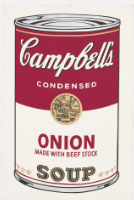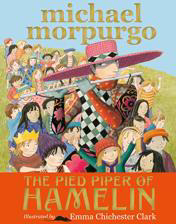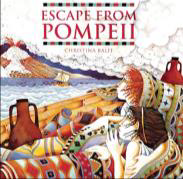Welcome to Spring 1 in Blue Jays.
Read on to find out what's coming up.
You can find our knowledge organisers for this half-term at the bottom of the page or in the knowledge organiser album to the side.
Art
This unit uses still life to explore how artists use different techniques to show the form of an object. Children will explore what a still life is, how it is a genre in art which has existed for a long time. They will compare a still life painted on the walls at Herculaneum from 79 C.E. with pop art by Andy Warhol from the 1960s. They will look at the still-life work of Morandi, using his work to investigate the meaning of form, and how artists use different techniques to create the illusion of three dimensions in a two-dimensional drawing.




Computing
This unit explores the concept of sequencing in programming through Scratch. It begins with an introduction to the programming environment, which will be new to most learners. They will be introduced to a selection of motion, sound, and event blocks which they will use to create their own programs, featuring sequences. The final project is to make a representation of a piano. The unit is paced to focus on all aspects of sequences, and make sure that knowledge is built in a structured manner. Learners also apply stages of program design through this unit.
English


In English, we will be reading the above texts. The children will explore features of this text to create their own letters, narratives and adverts. Our learning will cover the accurate use of the possessive apostrophe in words with regular plurals [for example, girls’, boys’] and in words with irregular plurals [for example, children’s]. They will write from memory simple sentences, dictated by the teacher that include words and punctuation taught so far. The children will learn to organise paragraphs around a theme using simple organisational devices for headings and subheadings in non-fiction texts.
French
This half term, Blue Jays will
- Recall all numbers one to six, with generally accurate pronunciation, in particular vowel and combinations sounds (‘un’, ‘eu‘, ‘oi‘ and ‘in‘).
- Join in with a song using actions.
- Respond to numbers by showing fingers or ticking on whiteboards.
- Ask and answer a question about their age.
- Change their answers and recognise a number of words.
- Listen carefully and relate sounds to a written phoneme.
- Recall numbers one to 12 with increasingly accurate pronunciation.
Geography
The Blue Jays will look at the regional geography of Southwest England. They will identify the counties of Gloucestershire, Bristol, Wiltshire, Somerset, Dorset and Devon. Blue Jays will look at the major industries of Southwest England: farming and tourism. The children will look at the steps of coastal erosion and know that the Southwest of England is one of the warmest parts of Britain because it is the furthest south and is warmed by the Gulf Stream.
History
This unit focusses on the power struggle between the monarchy, church and the people during the Middle Ages. Throughout this unit, the children will analyse some of the significant changes that took place during this period which helped pave the way for a fairer and more democratic Great Britain, such as Henry II's legal reforms, the sealing of the Magna Carta, and Simon de Montfort’s Parliament. They will also look at the Holy Wars and learn about Richard I and Sultan Saladin. The children will be looking at the restraints put on the power of the monarchy by both the people and the church. This unit focusses on the early Plantagenet monarchs that will later be introduced in the wars of the roses.
PE- Dodgeball and Netball
Dodgeball is a target game, whilst Netball is an invasion game. This half-term, children will aspire to apply tactics to outwit their opponents using their key skills such as throwing, dodging and catching. Pupils are given opportunities to play games independently and are taught the importance of fair play and honesty while self-managing games and learning and abiding by key rules.
RE
The Blue Jays will have discussions about our big question:
The children will hear about the miracles of the Bible and consider the important messages that Christians may take from them. Children will examine artwork to decipher the miracles that Christians believe that Jesus achieved with God's help.


Science
In this unit, children will learn that light is an energy that enables us to see, and interact with, the world around us. They will learn there are many different sources of light and the light of the sun is vital for life on earth. Children will work scientifically to find out if materials are transparent or opaque using torches. They will learn that light travels in straight lines and sometimes bounces off from an object or material and that scientists call this reflection.
Below you can also find the homework, spelling and beat it sheet for this half-term.
